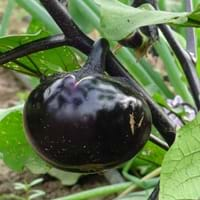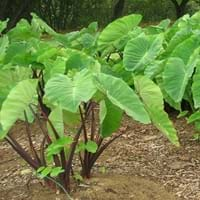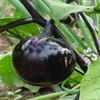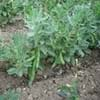Life Span
Perennial
Annual
Type
Vegetable
Tender Perennial
Origin
Africa, Asia
Southeastern Asia
Types
esculentum, depressum, serpentium
Eddoe taro, Dasheen taro
Habitat
Anthropogenic, Wild
agricultural areas, Hillside, Warm and moist climatic conditions
USDA Hardiness Zone
10-12
10-11
Sunset Zone
A1, A2, A3, H1, H2, 1a, 1b, 2a, 2b, 3a, 3b, 4, 5, 6, 7, 8, 9, 10, 11, 12, 13, 14, 15, 16, 17, 18, 19, 20, 21, 22, 23, 24
H1, H2, 22, 23, 24
Habit
Clump-Forming
Clump-Forming
Flower Color
Lavender
White, Green
Flower Color Modifier
Bicolor
Not Available
Fruit Color
White, Purple, Plum, Black
Red
Leaf Color in Spring
Green
Dark Green, Ivory
Leaf Color in Summer
Green
Dark Green, Ivory
Leaf Color in Fall
Green
Dark Green, Ivory
Leaf Color in Winter
Green
Dark Green, Ivory
Leaf Shape
Broad, Unlobed
V-Shaped
Plant Season
Summer, Fall
Spring, Summer, Fall, Winter
Sunlight
Full Sun
Partial shade, Full Shade
Growth Rate
Very Fast
Fast
Type of Soil
Clay, Loam, Sand
Loam, Sand
The pH of Soil
Neutral
Acidic, Neutral
Soil Drainage
Well drained
Well drained
Bloom Time
Indeterminate
Indeterminate
Tolerances
Drought
Heat Tolerance, Humidity, Salt and Soil Compaction, Shallow soil
Where to Plant?
Container, Ground
Container
How to Plant?
Seedlings, Transplanting
From Rhizomes
Plant Maintenance
Medium
Medium
Watering Requirements
Average Water Needs, Keep the ground moist but not water-logged
Needs 2-3 times watering per week, Needs a lot of water initially
In Summer
Average Water
Lots of watering
In Spring
Moderate
Moderate
In Winter
Average Water
Average Water
Soil pH
Neutral
Acidic, Neutral
Soil Type
Clay, Loam, Sand
Loam, Sand
Soil Drainage Capacity
Well drained
Well drained
Sun Exposure
Full Sun
Partial shade, Full Shade
Pruning
Remove damaged leaves, Remove dead branches, Remove dead leaves
No pruning needed
Fertilizers
All-Purpose Liquid Fertilizer, Apply 10-10-10 amount
All-Purpose Liquid Fertilizer, Less fertilizing
Pests and Diseases
Aphids, Beetles, Blight, Cutworms, Flea Beetles, Leaf spot, Red blotch
Aphids, Rats, Snails
Plant Tolerance
Drought
Heat Tolerance, Salt and Soil Compaction, Shade areas
Flowers
Showy
Insignificant
Flower Petal Number
Single
Not Available
Fragrant Bark/Stem
Yes
No
Foliage Texture
Medium
Bold
Foliage Sheen
Matte
Glossy
Attracts
Aphids, Beetles, Insects, Not Available
Aphids, Bugs, Not Available, Snails
Allergy
contact allergic dermatitis, Headache, Itchiness
Swelling in mouth, Throat itching
Aesthetic Uses
Not Used For Aesthetic Purpose
Showy Purposes
Beauty Benefits
Skin cleanser
Poison Ivy, Skin cleanser, Weightloss
Environmental Uses
Air purification
No fertilizer, pesticides, or herbicides needed, Prevent weeds
Medicinal Uses
Potassium, Rich in Iron, Vitamin C, Vitamin E, Vitamin K
Aging, Laxative, Weight loss
Part of Plant Used
Fruits, Leaves
Leaf Stalks, Leaves
Other Uses
Food for animals, Used as a nutritious food item, Used for its medicinal properties
Used As Food, Used as Ornamental plant
Used As Indoor Plant
Yes
No
Used As Outdoor Plant
Yes
Yes
Garden Design
Container, Edible, Herb / Vegetable
Container, Feature Plant, Groundcover, Houseplant, Mixed Border, Tropical
Botanical Name
SOLANUM melongena 'Ichiban'
ALOCASIA micholitziana
Common Name
Eggplant, Ichiban Eggplant, Japanese Eggplant
Elephant Ear, Taro
In German
Aubergine
Colocasia (Pflanzengattung)
In French
Aubergine
Colocasia
In Spanish
Berenjena
Colocasia
In Greek
Μελιτζάνα
Colocasia
In Portuguese
Berinjela
Colocasia
In Polish
Bakłażan
Kolokazja
In Latin
Eggplant
Colocasia
Phylum
Magnoliophyta
Magnoliophyta
Class
Magnoliopsida
Liliopsida
Family
Solanaceae
Araceae
Clade
Angiosperms, Asterids
Angiosperms, Monocots
Tribe
Solaneae
Colocasiodeae
Subfamily
Solanoideae
Aroideae
Number of Species
Not Available
Season and Care of Eggplant and Taro
Season and care of Eggplant and Taro is important to know. While considering everything about Eggplant and Taro Care, growing season is an essential factor. Eggplant season is Summer and Fall and Taro season is Summer and Fall. The type of soil for Eggplant is Clay, Loam, Sand and for Taro is Loam, Sand while the PH of soil for Eggplant is Neutral and for Taro is Acidic, Neutral.
Eggplant and Taro Physical Information
Eggplant and Taro physical information is very important for comparison. Eggplant height is 60.00 cm and width 30.00 cm whereas Taro height is 30.00 cm and width 30.00 cm. The color specification of Eggplant and Taro are as follows:
Eggplant flower color: Lavender
Eggplant leaf color: Green
Taro flower color: White and Green
- Taro leaf color: Dark Green and Ivory
Care of Eggplant and Taro
Care of Eggplant and Taro include pruning, fertilizers, watering etc. Eggplant pruning is done Remove damaged leaves, Remove dead branches and Remove dead leaves and Taro pruning is done No pruning needed. In summer Eggplant needs Average Water and in winter, it needs Average Water. Whereas, in summer Taro needs Lots of watering and in winter, it needs Average Water.





